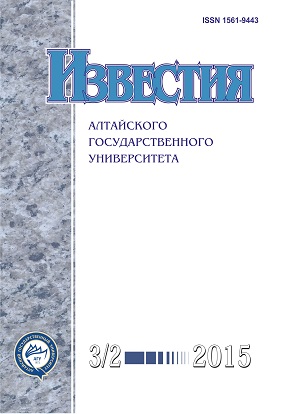Эпипалеолит Ближнего Востока: обзор исследовательских концепций
Аннотация
В настоящее время эпипалеолит на территории Леванта является наиболее изученным с точки зрения как количества памятников, реконструированных каменных технологий, поселенческих и погребальных комплексов, предметов неутилитарной деятельности; так и палеоэкологических построений. Его изучение имеет большое значение в связи с появлением новых гипотез генезиса и развития верхнего палеолита и мезолита западной части Центральной Азии. Настоящая работа посвящена освещению основных концепций развития позднеплейстоценовых-раннеголоценовых комплексов Ближнего Востока в зарубежной историографии. Рассматриваются вопросы употребления термина «эпипалеолит», история его применения и интерпретации, вопросы хронологии и периодизации эпипалеолитических индустрий, ранних технологических инноваций и их дальнейшего распространения на исследуемой территории, проблемы межкультурных взаимодействий между древними популяциями. На каждом выделенном хронологическом этапе развития эпипалеолитических индустрий Леванта фиксируется значительная вариабельность комплексов, выраженная в значительном типологическом и технологическом разнообразии негеометричиеских и геометрических микролитов. Причина вариабельности основных форм связывается с культурным развитием, которое обусловлено адаптацией к серьезным климатическим изменениям, а также к различным условиям окружающей среды.
DOI 10.14258/izvasu(2015)3.2-16
Скачивания
Metrics
Литература
Кривошапкин А.И. Обирахматский вариант перехода от среднего к верхнему палеолиту : автореф. дис.. д-ра ист. наук. - Новосибирск, 2012.
Колобова К.А. Верхний палеолит Западного Памиро-Тянь-Шаня : автореф. дис.. д-ра ист. наук. - Новосибирск, 2014.
Pirie A. Chipped Stone Variability and Approaches to Cultural Classification in the Epipaleolithic of the South Levantine arid Zone. A Thesis Submitted for the Degree “Doctor of Philosophy” / Department of Archaeology. - 2001.
Richter T. Marginal Landscapes? The Azraq Oasis and the Cultural Landscapes of the Final Pleistocene Southern Levant. - L., 2009.
Окладников А.П. Палеолит и мезолит Средней Азии // Средняя Азия в эпоху камня и бронзы. - 1966.
Коробкова Г.Ф. Мезолит Средней Азии и Казахстана // Мезолит СССР. - М., 1989.
Ранов В.А. Каменный век Южного Таджикистана и Памира : автореф. дис.. д-ра ист. наук. - Новосибирск, 1988.
Филимонова Т.Г. Верхний палеолит и мезолит афгано-таджикской депрессии : автореф. дис.. канд. ист. наук. - Душанбе, 2007.
Bar-Yosef O. The Epi-Paleolithic Cultures of Palestine. Thesis Submitted for the Degree “Doctor of Philosophy”. - Jerusalim, 1970.
McDonald D.A. Interpreting Variability through Multiple Methodologies: The Interplay of Form and Function in Epipalaeolithic Microliths. A Thesis Submitted for the Degree “Doctor of Philosophy” / Department of Anthropology University of Toronto. - 2013.
Bar-Yosef O. On the Nature of Transitions: the Middle to Upper Palaeolithic and the Neolithic Revolution // Cambridge Archaeological Journal. - 1998. - Vol. 8/2.
Belfer-Cohen A., Gorring-Morris N. The Upper Paleolithic and Earlier Epi-Paleolithic of Western Asia // In The Cambridge World Prehistory. - Cambridge, 2013. - Vol. 3.
Maher L.A., Richter T., Stock J.T. The Pre-Natufian Epipaleolithic: Long-Term Behavioral Trends in the Levant // Evolutionary Anthropology. - 2012. - Vol. 21.
Richter T., Maher L.A. Terminology, Process and Change: Reflections on the Epipalaeolithic of South-west Asia // Levant. - 2013. - Vol. 45. - № 2.
Belfer-Cohen A., Gorring-Morris N. Why Microliths? Microlithization in the Levant // Thinking Small. - 2002.
Gilead I. Is the Term “Epipalaeolithic” Relevant to Levantine Prehistory? // Current Anthropology. - 1984. - № 25 (2).
Gilead I. The Upper Palaeolithic to Epi-Palaeolithic Transition in the Levant // Paleorient. - 1988. - № 14 (2).
Bar-Yosef O. The Last Glacial Maximum in the Mediterranean Levant // The World at 18,000 BP, eds. O. Soffer & C. Gamble Unwin Hyman. - 1989.
Bar-Yosef O., Vogel J.C. Relative and Absolute Chronology of the Epipalaeolithic in the Southern Levant // Chronology of the Near East, eds. O. Aurenche, J. Evin & F. Hours. - Oxford., 1987. - № 379.
Byrd B.F. Late Quaternary Hunter-Gatherer Complexes in the Levant between 20,000 and 10,000 BP // Late Quaternary Chronology and Paleoclimates of the Eastern Mediterranean. - 1994.
Goring-Morris A.N. Complex Hunter/Gatherers at the End of the Paleolithic // The Archaeology of Society in the Holy Land. Red. T. Levy. - L., 1995.
Goring-Morris A.N., Belfer-Cohen A. The Articulation of Cultural Processes and Late Quaternary Environmental Changes in Cisjordan // Paleorient. - 1998. - Vol. 23.
Henry D.O. Prehistoric Cultural Ecology and Evolution. Insights from Southern Jordan. - New York, 1995.
Shea J. Stone Tools in Paleolithic and Neolithic Near East - New York, 2013.
Nadel D. The Ohalo II Flint Assemblage and the Beginning of the Epipalaeolithic in the Jordan Valley // More than Meets the Ezye: Studies on Upper Paleolithic Diversity in the Near East. - Oxford, 2003.
Yaroshevich A., Nadel D., Tsatskin A. Composite Projectiles and Hafting Technologies at Ohalo II (23 ka, Israel): Analyses of Impact Fractures, Morphometric Characteristics and Adhesive Remains on Microlithic Tools // Journal of Archaeological Science. - 2013. - Vol. 40/11.
Yaroshevich A., Kaufman D., Nuzhnyy D., Bar-Yo-sef O., Weinsteiner-Evron M. Design and Performance of Microlith Implemented Projectiles during the Middle and the Late Epipaleolithic of the Levant Experimental and Archaeological Evidence // Jornal of Archaelogical Science. - 2010. - № 37.
Richter T., Garrard A.N., Allock S., Maher L.A. Interaction before Agriculture: Exchanging Material and Sharing Knowledge in the Final Pleistocene Levant // Cambridge Archaeological Journal. - 2010. - Vol. 21/1.
Olszewski D. A Reassessment of Average Lunate Length as a Chronological Marker // Paleorient. - 1986. - Vol. 21.
Goring-Morris A.N., Belfer-Cohen A. Neolithization Processes in the Levant: the Outer Envelope // Current Anthropology. - 2012. - № 52.








